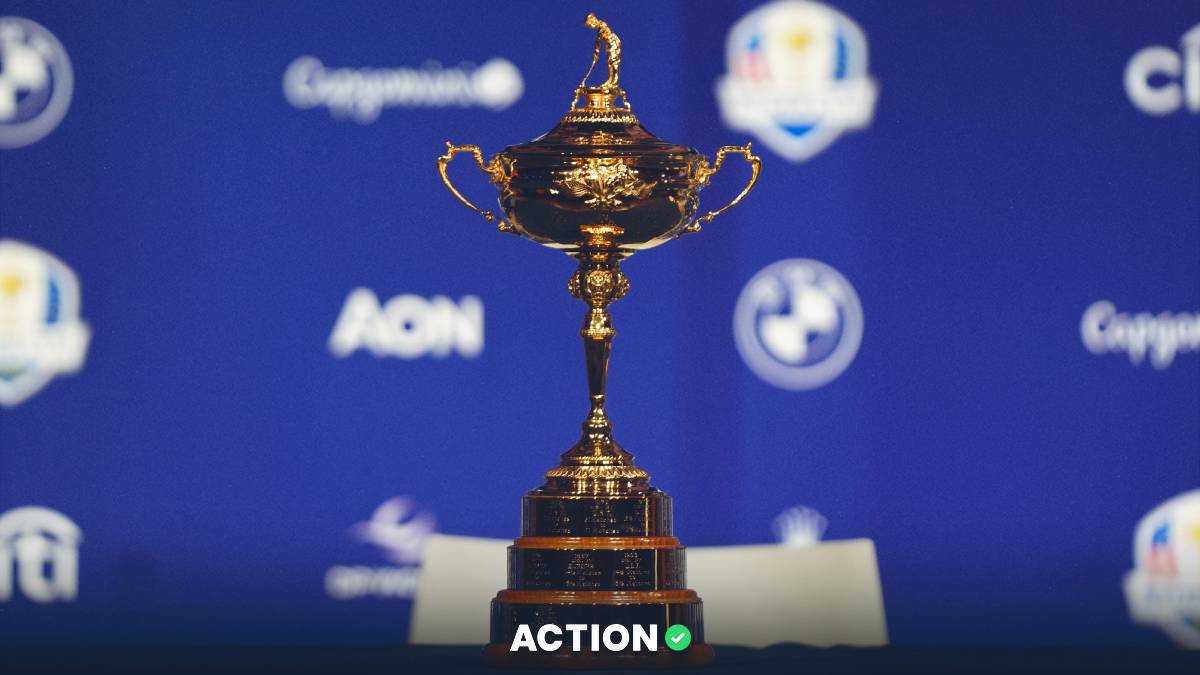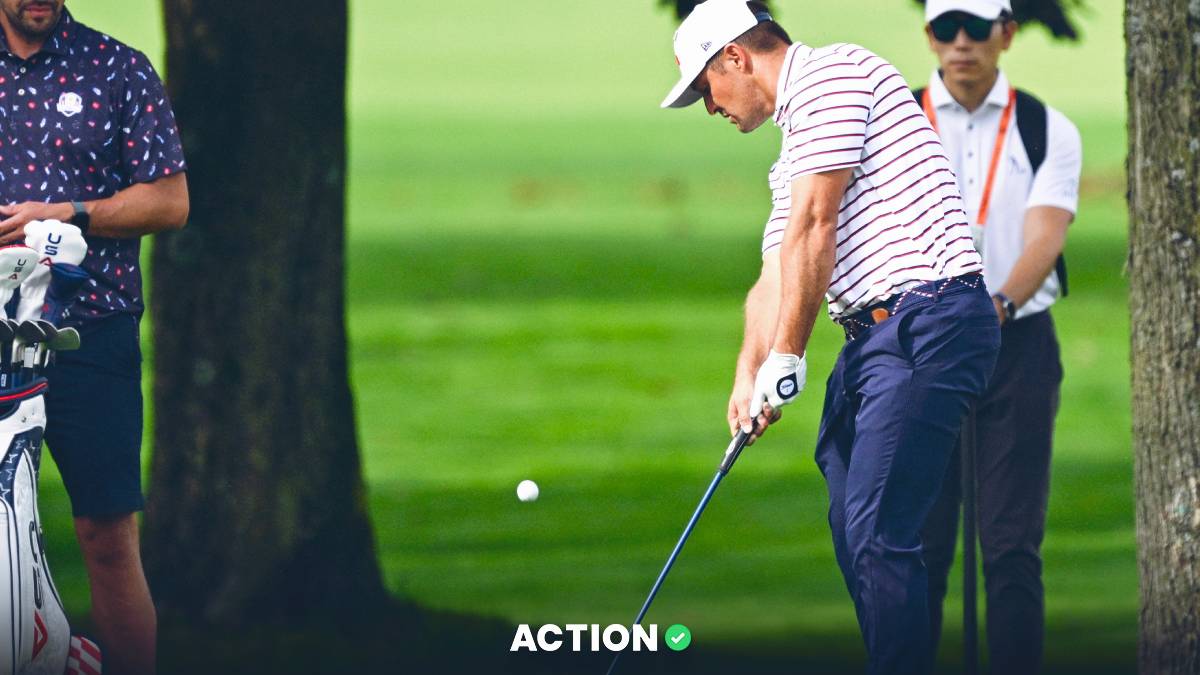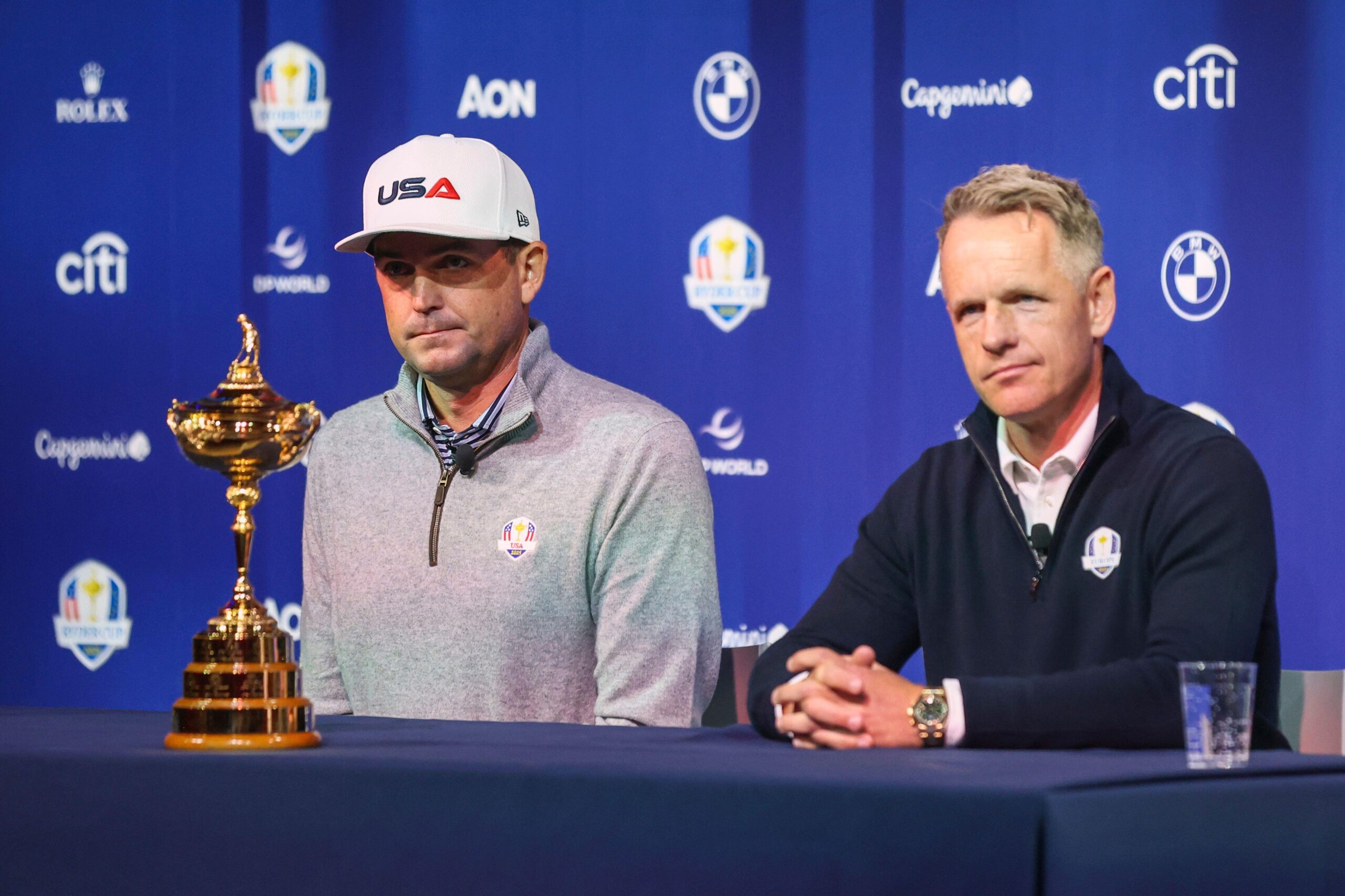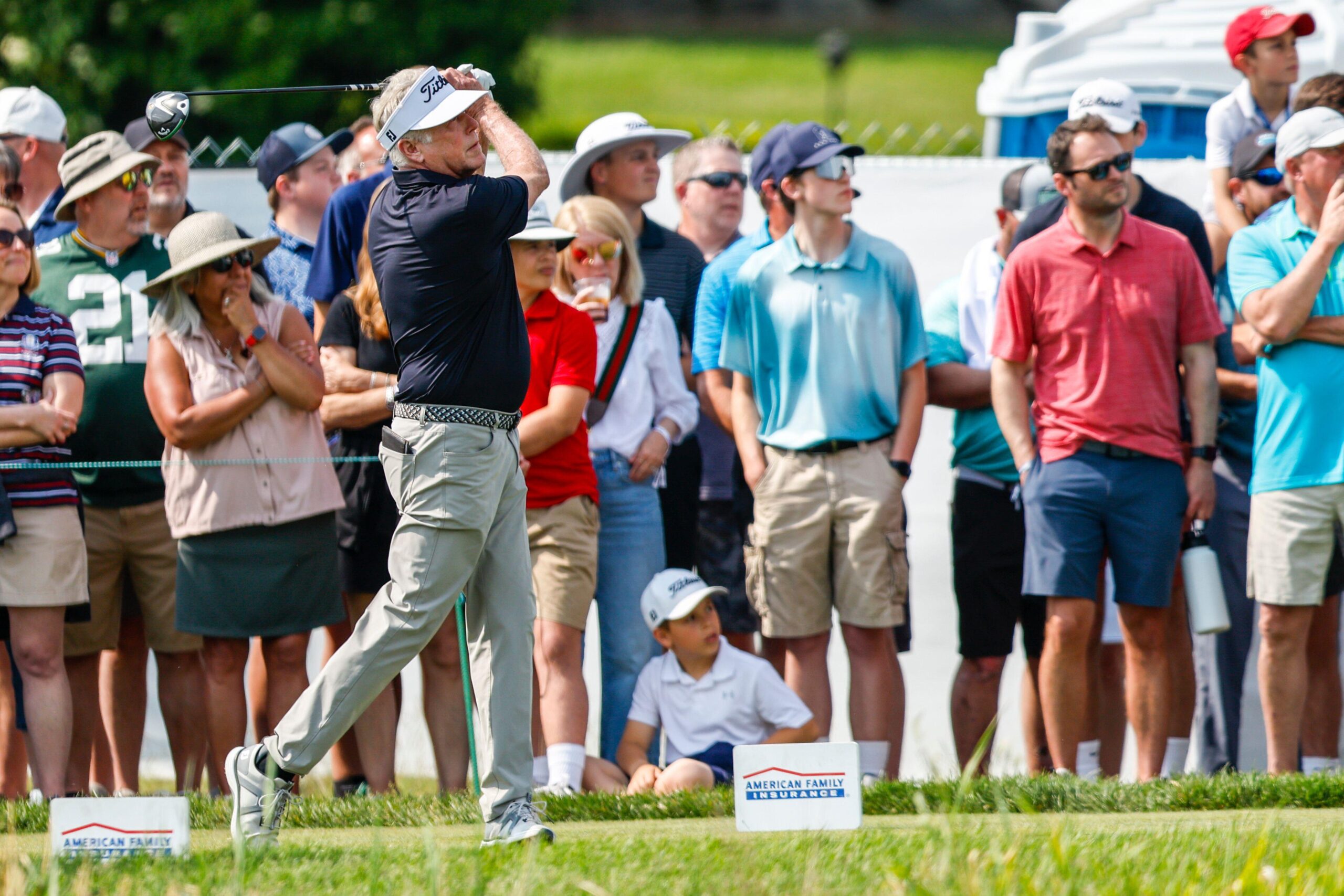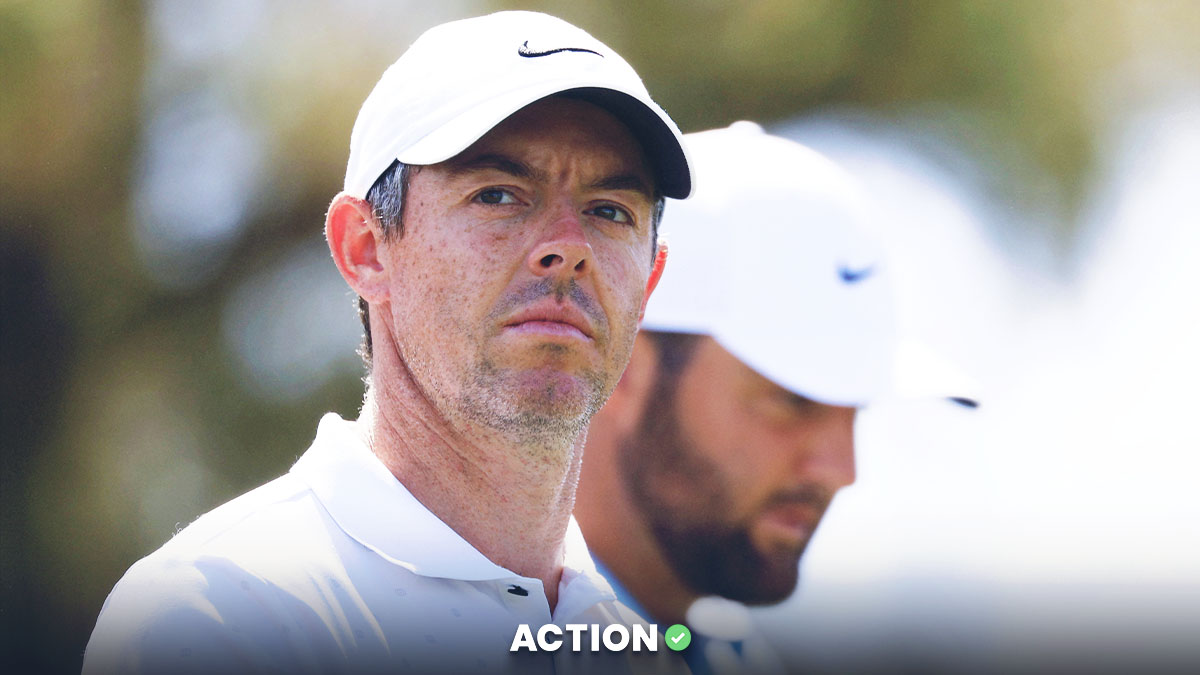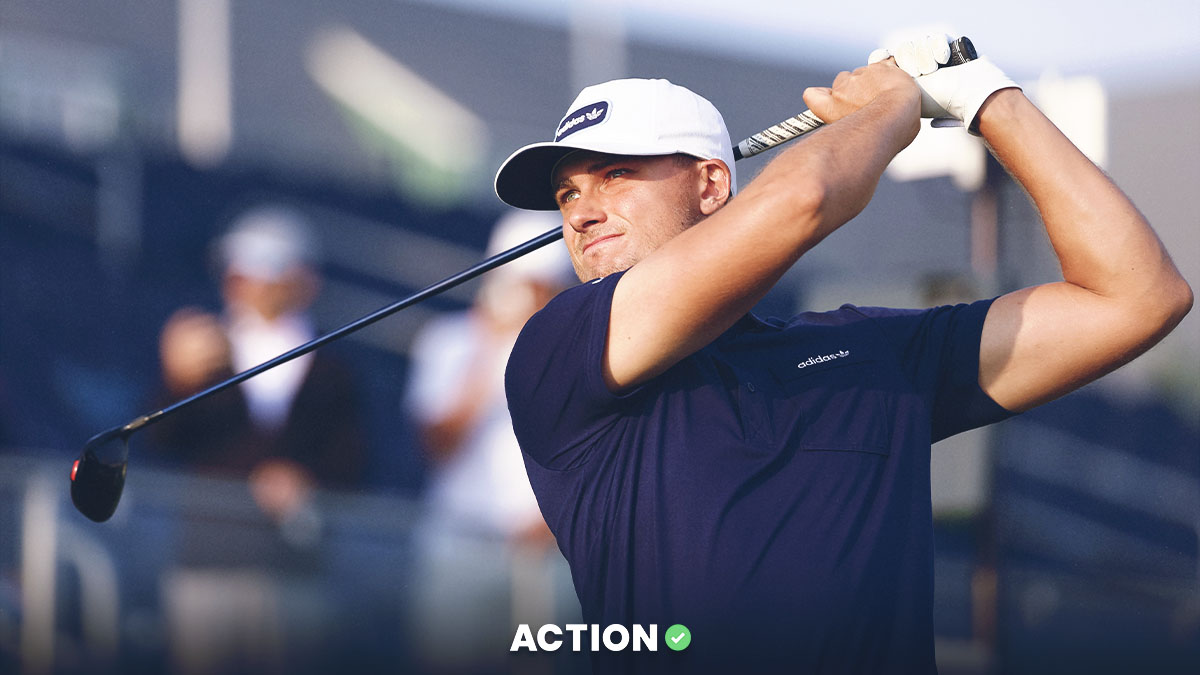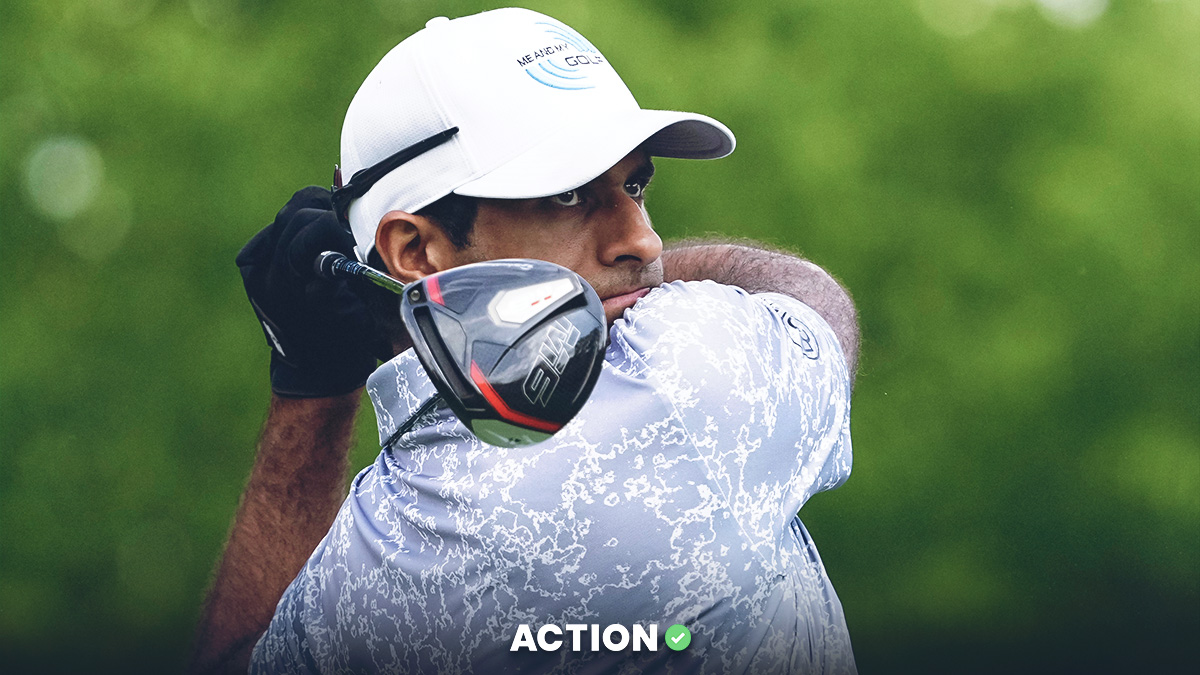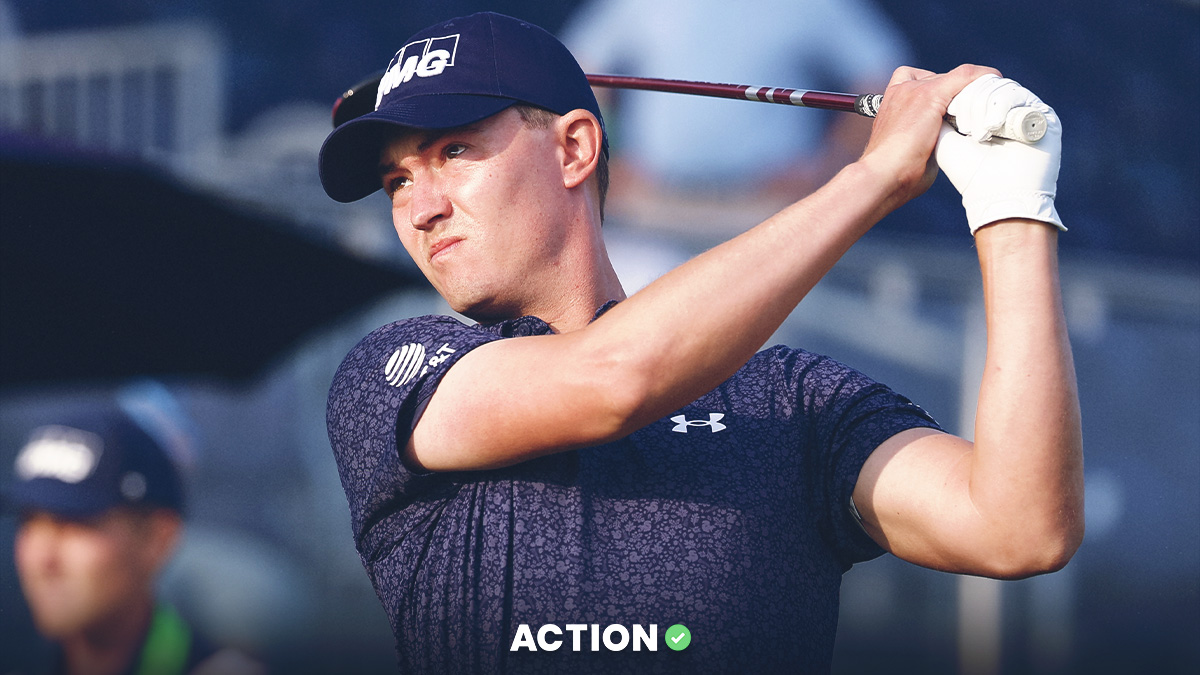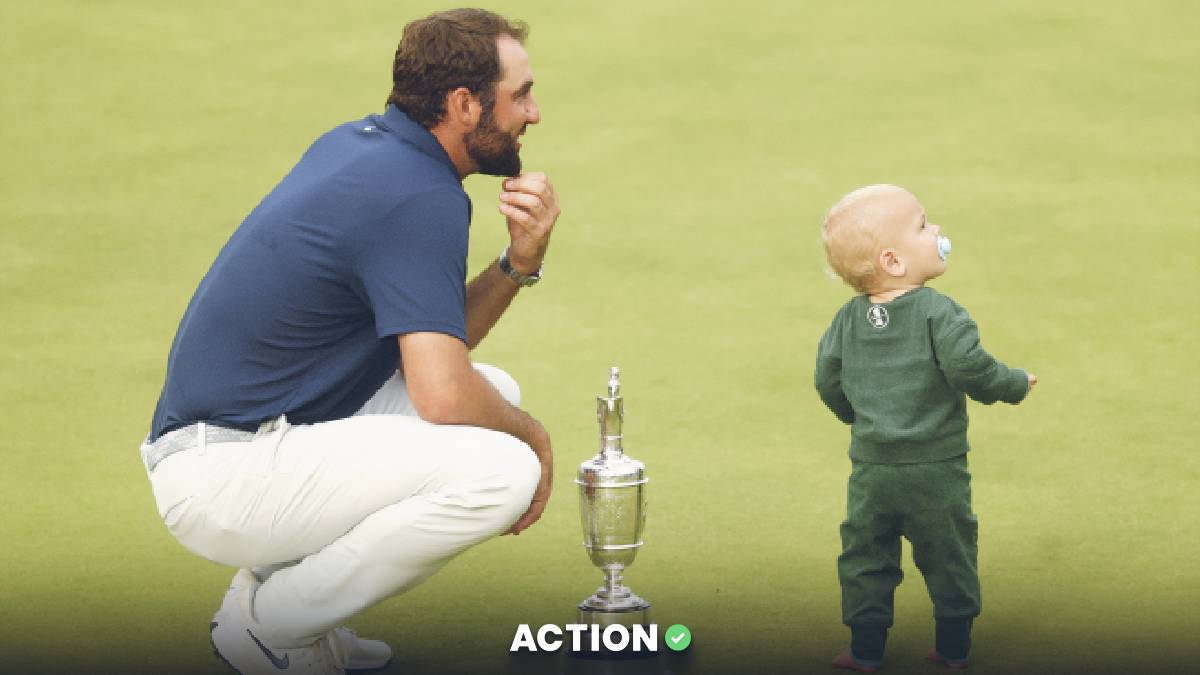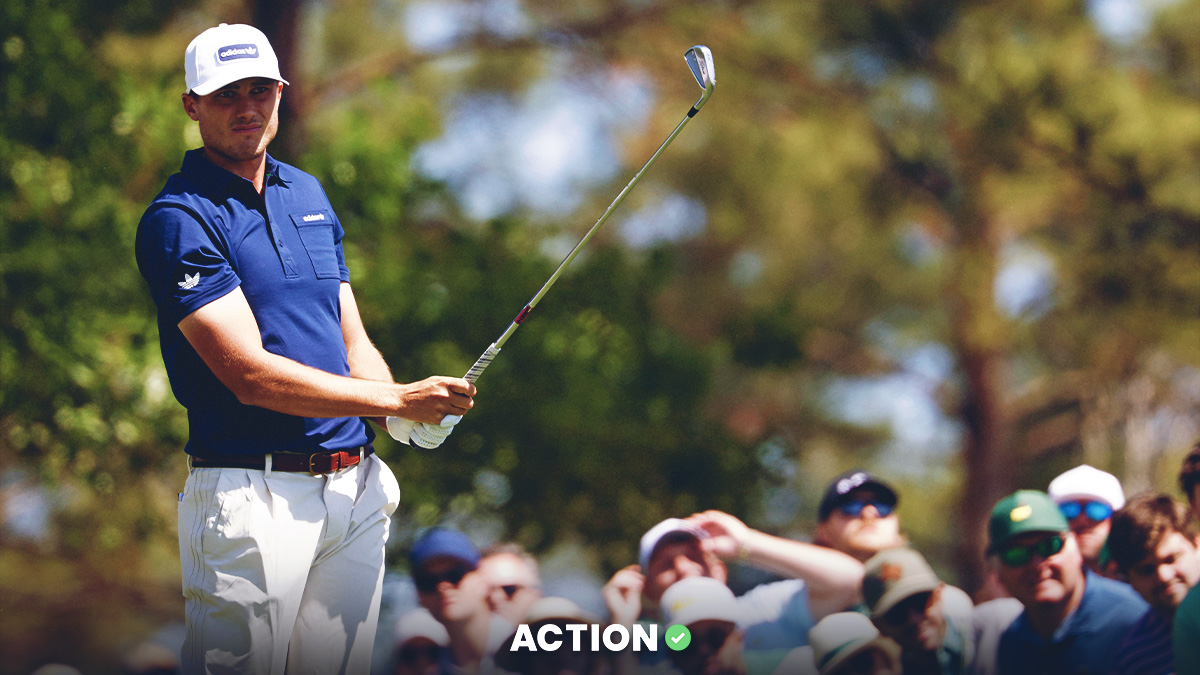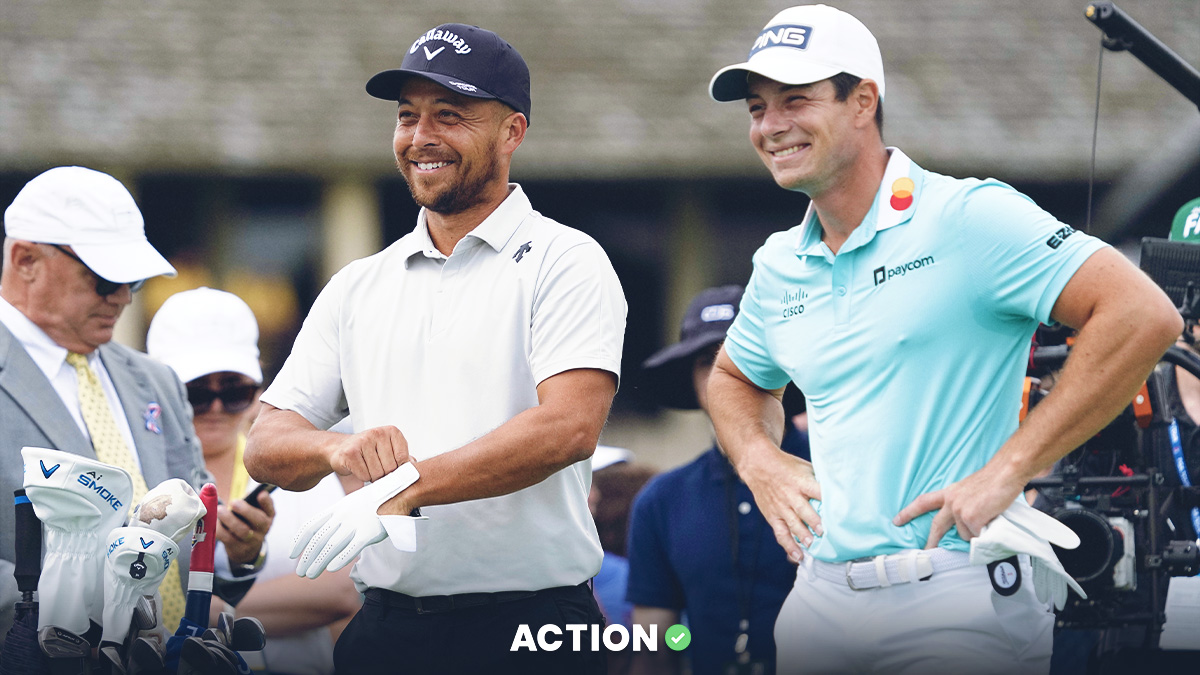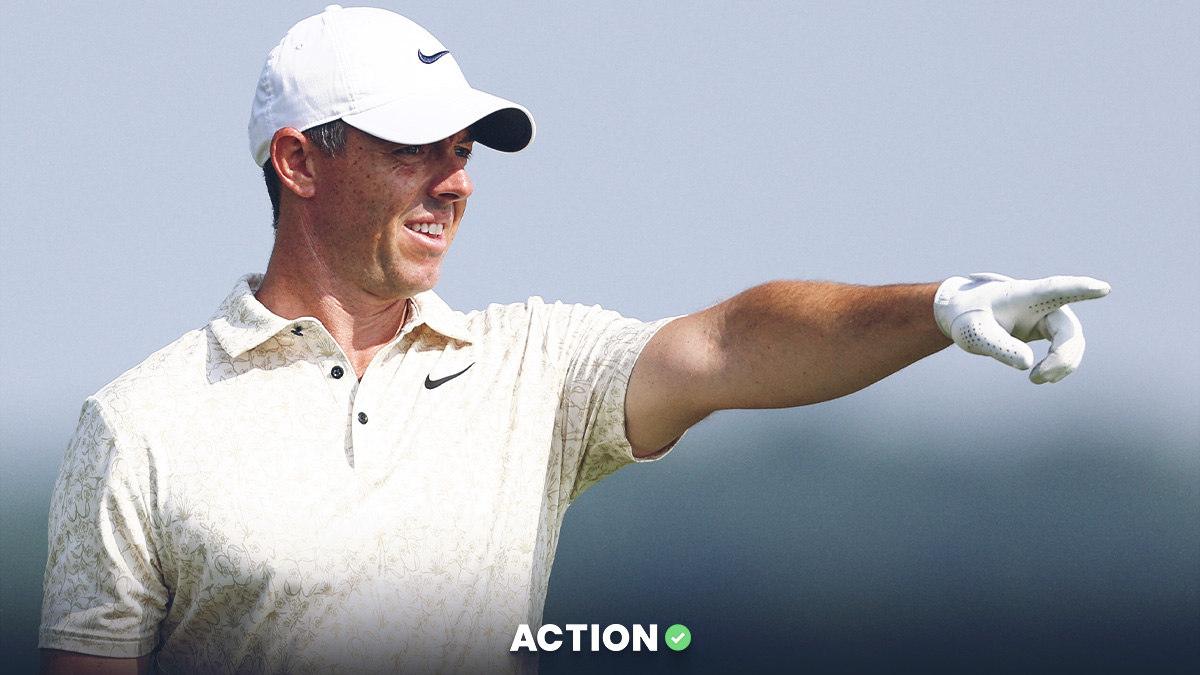The term dead heat — when two participants finish exactly even — got its name from racing. But it comes up far more often in golf betting.
A dead heat refers to ties in golf bets like Top 5s, Top 10s and Top 20s, or other markets like 3-ball matchups and first-round leaders. Like if four players tie for 10th, you won't receive the full payout for a Top 10 bet at most sportsbooks.
When players tie, your bet amount is usually cut by how many players are tied for those spots. So part of your bet is a loser, and the remainder stands at the original odds.
Below we'll cover dead heat rules for:
- Top 5/Top 10/Top 20 bets
- 3-Ball matchups
- First round leaders
BetMGM is one U.S. book that pays all ties in full for finishing position bets like full tournament Top 5s or Top 20s, though they offer worse prices on these markets than other sportsbooks. MGM does not pay out in full for first-round leader bets.
So what exactly is a dead heat, and how are the payouts calculated?
The tricky part on the surface is that the "ties" often go through T-5 or T-10 — you may have five players tied for third at -11, and then the next player on the leaderboard finishes in eighth.
Here are two examples from the 2020 Charles Schwab Challenge, covering several of those circumstances.
Dead Heat Examples
| Place | Golfer | Score |
|---|---|---|
| 1 | Daniel Berger | -15 |
| 2 | Collin Morikawa | -15 |
| T-3 | Justin Rose | -14 |
| T-3 | Bryson DeChambeau | -14 |
| T-3 | Jason Kokrak | -14 |
| T-3 | Xander Schauffele | -14 |
| T-7 | Bubba Watson | -13 |
| T-7 | Patrick Reed | -13 |
| 9 | Gary Woodland | -12 |
| T-10 | Sungjae Im | -11 |
| T-10 | Jordan Spieth | -11 |
| T-10 | Justin Thomas | -11 |
| T-10 | JT Poston | -11 |
1. Top 5 Example
This event had four players tied for third. They occupied positions 3-6 on the leaderboard.
Therefore, if you bet any of them to finish Top 5 at a book that applies dead heat rules (which is pretty much all of them in the United States), your stake was cut by 25%, so you'd win 75% of your original bet.
That's because there were only three spots for four tied players in the Top 5. It was essentially one extra player occupying the position you needed to cash your bet.
That means a $40 bet on Justin Rose at +900 to finish Top 5 becomes a $30 bet. You lose the other $10.
Here's what you expected before the tournament had the bet cashed, and your actual result:
| Stake | Bet | Total Return |
|---|---|---|
| Pre-Tournament: $40 | Rose Top 5 (+900) | $400 |
| Result: $30 | Rose Top 5 (+900) | $300 |
So you lost out on an extra $90 because of that extra player occupying a T5 spot.
2. Top 10 Example
Tenth-place at the Charles Schwab also had dead-heat rules apply, but because there was only one spot available for four tied players, your stake would take an even bigger hit than in the Top 5 example.
Justin Thomas to finish Top 10 before the tournament was around +200. Your stake would be cut by to 75% because there was only one spot for four guys, so you'd win 25% of your original bet.
So a $100 bet on Thomas becomes a $25 bet, with the other $75 a loser.
Here's what you expected before the tournament, and your actual result:
| Stake | Bet | Total Return |
|---|---|---|
| Pre-Tournament: $100 | Thomas Top 10 (+200) | $300 |
| Result: $25 | Thomas Top 10 (+200) | $-25 |
3. First Round Leader Example
One of the most common dead heats — or the one bettors care about the most — is first round leaders.
All books will chop your first-round leader bets by how many players are tied.
At the 2020 Masters, you had a leaderboard after Day 1 with three players at the top:
- Dustin Johnson (30-1 FRL odds)
- Paul Casey (60-1)
- Dylan Frittelli (150-1)
In each case, your bet will be cut by 2/3 because three players occupy that one spot — Dustin Johnson essentially pays out 10-1, Casey 20-1, and Frittelli 50-1.
If just Johnson and Casey had tied, FRL bets would have paid out 15-1 and 30-1.
Most books will actually cut the amount you bet, and not the odds, which usually doesn't matter for longshots like FRL bets, but does for odds closer to +100, which we'll explain below.
4. Matchup/3 Ball Example
As we've touched on, most books will take half your bet amount, and then apply the same odds to the remainder of your bet. It works the same for 3-ball matchups. In a matchup with two golfers, a tie will just result in a push and your money back.
Let's say you bet a 3-ball matchup at the 2022 PLAYERS in Round 1:
- Will Zalatoris +110
- Harold Varner +210
- Charley Hoffman +270
Zalatoris and Varner tied. If you bet $20 on Zalatoris, you'd lose $10 of that because of the dead heat.
The remaining $10 is a winner at +110. So that returns $21 total on a $20 bet … good for $1 in profit.
Why Does it Matter if the Stake or Odds Are Cut?
At most sportsbooks, your stake will be cut by the number of tied golfers relative to the spots available. Some others will cut the odds. And there could be a big difference in money depending on the bet.
MGM doesn't have dead-heat rules at all for bets like Top 20s, and will pay ties in full. Most others cut the stake.
You won't notice a difference between the stake and odds getting cut when betting $10 on a 100-1 first-round leader longshot, but when betting Top 5's, 10's and 20's at lower odds, you can lose money on a dead-heat result, like the Thomas example above.
But you almost always want the odds cut, not the stake.
Let's say Rory McIlroy is +200 to finish top 20, and he finishes in a two-way tie for 20th. In this case, it's clear you'd rather have the odds cut to +100 than the stake cut to $50.
- $100 at +100 = $200 total return
- $50 at +200 = $150 total return
Even if you're betting longshots, where the stake is small and the payout is large, you'd want to have the odds cut.
Let's say Jason Kokrak is 24-1 to finish Top 5, and he ties for fifth with two other players.
- $100 at +800 = $900 return
- $33.33 at +2400 = $833.33 return
Of course, you'd rather have no dead heat applied at all. So bet at MGM if you can.
Which Books Do What?
No dead heat used to be an advantage for bettors, assuming the prices are comparable to other books. But now, anyone that offers finishing position bets with ties included will just adjust the odds so that in the long run, there's really no difference in betting with ties or without them.
bet365, BetMGM and DraftKings now offer options for betting with finishing positions included, though you'll get worse odds. A player at +400 with no dead heat protection to finish top 20 might be +315 with ties included. Some weeks it might really pay off using the ties included line, if 10 players tie for 20th and it really becomes a top 30 bet. Other weeks, it'll cost you if there are no ties at the 20th spot.
Typically, dead heat books will offer slightly better odds overall, but that doesn't mean they'll have the best odds on every golfer.
Here's how much each book held from their Top 20 market for the 2020 RBC Heritage.
| Book | Hold | Grading |
|---|---|---|
| PointsBet | 26.4% | Odds Cut |
| BetMGM | 26.7% | No Dead Heat |
| Bet365 | 22.05% | Stake Cut |



